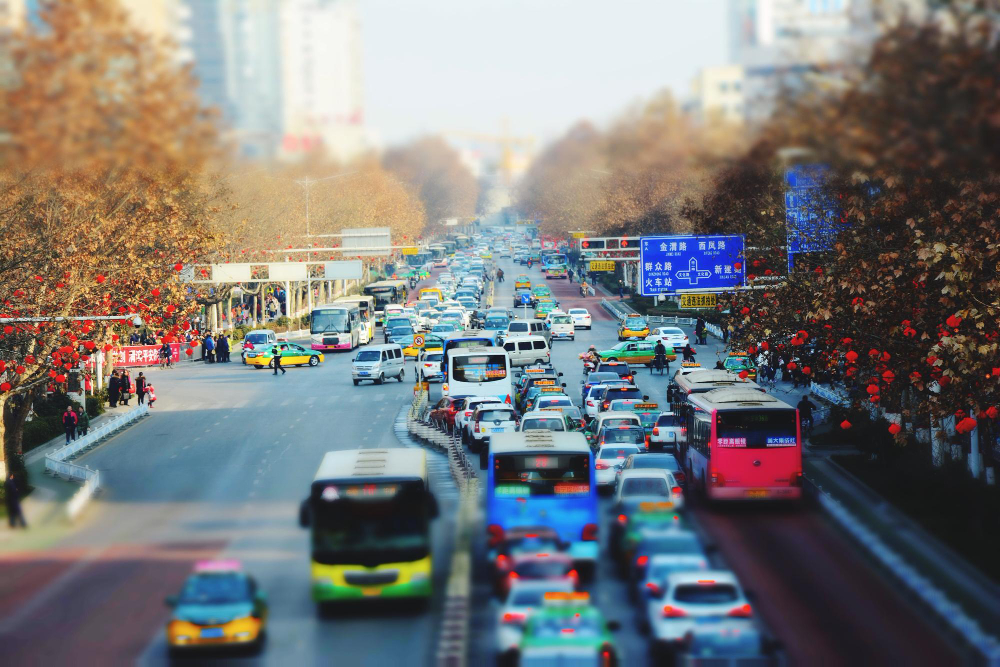Eliminating Urban Traffic Bottlenecks: A Strategic Guide for CIOs and CTOs

Urban traffic bottlenecks are the bane of modern cities, draining billions in productivity, fueling commuter frustration, and worsening air quality. For CIOs and CTOs tasked with spearheading technological transformations in public transport and urban infrastructure, these bottlenecks represent a critical challenge. Addressing this issue requires leveraging cutting-edge technologies such as IoT, AI, and advanced analytics to create seamless, efficient, and adaptive urban mobility ecosystems.
This article dives deep into the strategies, technologies, and frameworks that CIOs and CTOs can adopt to eliminate urban traffic bottlenecks, positioning themselves as enablers of smarter, greener cities.
Urban traffic bottlenecks often result from a combination of outdated infrastructure, inefficient traffic management, and unpredictable commuter behaviors. Key factors include:
Infrastructure Misalignment: Roads and intersections not designed for current population densities.
Reactive Traffic Management: Traditional traffic systems that respond to problems after they arise rather than preempting them.
Inadequate Public Transit Integration: Disconnected transit systems fail to provide a compelling alternative to personal vehicles.
Commuter Habits: Over-reliance on private vehicles, often due to the lack of convenient public transit options.
CIOs and CTOs must address these pain points with targeted technological interventions that align urban mobility with the needs of the 21st century.
1. IoT-Enabled Smart Traffic Lights
IoT devices embedded in traffic lights can monitor real-time traffic flow and adapt signal timings dynamically. For example, adaptive traffic signal control systems use data from cameras and sensors to prioritize high-traffic lanes, reducing congestion at intersections by up to 30%.
2. AI-Powered Traffic Flow Prediction
AI models trained on historical and real-time data can predict traffic surges and suggest preemptive measures. These models enable cities to deploy resources such as traffic enforcers or dynamically adjust road usage policies to prevent bottlenecks before they occur.
3. Connected Public Transit Systems
IoT and AI integration in public transit systems ensure real-time communication between buses, trains, and other transit modes. For instance, predictive analytics can optimize bus schedules based on commuter demand, minimizing idle times and increasing usage rates.
4. Vehicle-to-Infrastructure (V2I) Communication
V2I technology enables vehicles to communicate with traffic signals, toll booths, and parking systems. This results in smoother traffic flow, reduced waiting times, and an enhanced commuter experience.
5. Real-Time Commuter Engagement
Mobile apps leveraging GPS and data analytics can provide commuters with live traffic updates, alternative routes, and public transit options, nudging them towards less congested paths and modes of transport.
6. Data-Driven Infrastructure Planning
Advanced analytics platforms can analyze urban mobility patterns to guide infrastructure investments. For example, heatmaps of congestion points can highlight areas needing road expansions, new transit lines, or parking reforms.
For CIOs and CTOs, the implementation of these solutions can seem daunting, requiring expertise, technology stacks, and seamless coordination. Here’s where Virtual Delivery Centers (VDCs) become invaluable.
What is a Virtual Delivery Center?
A Virtual Delivery Center is a cloud-based, on-demand team model that combines diverse expertise in AI, IoT, data analytics, and urban planning to execute complex projects. Unlike traditional teams, a VDC adapts to project needs dynamically, scaling resources up or down as required.
How VDCs Help CIOs and CTOs:
Accelerated Implementation: VDCs provide pre-vetted, highly specialized talent capable of deploying traffic solutions at lightning speed. This allows organizations to move from planning to execution without lengthy hiring or training processes.
Cost Efficiency: With no need for physical office space or long-term contracts, VDCs reduce operational costs significantly while delivering high-quality results.
Expertise Across Domains: VDCs bring together cross-functional teams skilled in IoT, AI, cloud computing, and urban analytics. This ensures comprehensive, well-integrated solutions for traffic bottlenecks.
Flexibility and Scalability: A VDC allows CIOs and CTOs to scale operations as needed, whether for a pilot project or a city-wide implementation.
Seamless Collaboration: Through advanced communication and project management tools, VDCs ensure smooth coordination across geographies and time zones, making global expertise accessible.
City: Singapore
Singapore’s Land Transport Authority (LTA) implemented a smart traffic management system integrating AI, IoT, and V2I technologies. Key outcomes:
Reduced traffic congestion by 25% during peak hours.
Enhanced commuter satisfaction with real-time transit tracking and mobile notifications.
Improved road safety through predictive analytics identifying high-risk zones.
This success highlights the transformative power of technology and the critical role of strategic leadership by CIOs and CTOs.
Urban traffic bottlenecks are not just a nuisance—they are an economic, environmental, and societal challenge. For CIOs and CTOs, eliminating these bottlenecks is an opportunity to lead transformational change. By leveraging technologies such as IoT, AI, and advanced analytics, and deploying innovative models like Virtual Delivery Centers, they can deliver lasting solutions that redefine urban mobility.
The future of urban transportation isn’t just about moving people—it’s about creating smart, sustainable cities where efficiency and innovation drive progress.